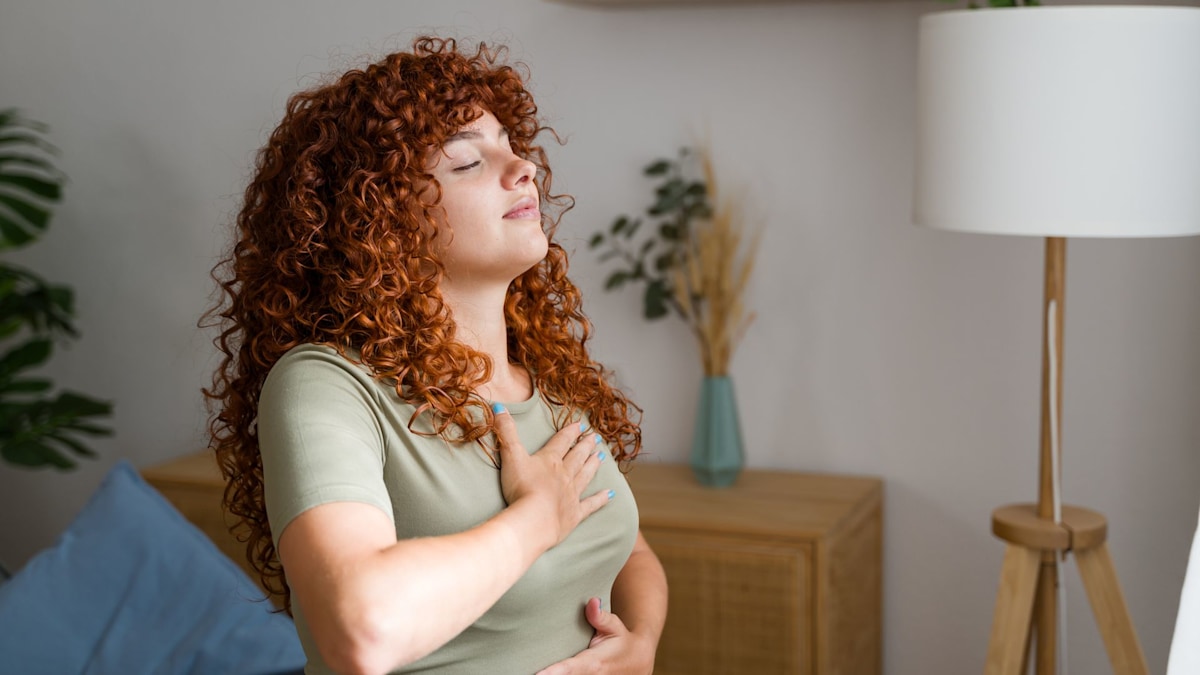Health
Discover 5 Effective Breathing Techniques to Reduce Stress

Feeling overwhelmed by daily stresses is a common experience for many, but when anxiety begins to impact overall happiness, it is essential to take notice. While anxiety is recognized as a medical condition requiring professional support, there are accessible techniques that may help alleviate some of its symptoms. Breathing exercises, in particular, have gained attention as simple yet effective methods to enhance mental well-being.
According to the NHS, controlled breathing can significantly influence stress levels. Various experts emphasize that these techniques can be learned easily and practiced anywhere. This approach is not merely about inhaling and exhaling; it involves specific methods that engage the mind and body, promoting a sense of calm.
Understanding the Impact of Breathing Techniques
Research highlights the physiological connection between breath and stress. When individuals feel anxious, their breathing often becomes shallow and rapid. By practicing intentional breathing, one can counteract these symptoms and foster relaxation. This is particularly beneficial for those who experience anxiety as a persistent challenge.
For instance, many individuals have found success in integrating **mindful breathing** into their daily routines. This method encourages individuals to focus on their breath and engage in meditation practices. Although some may initially doubt its effectiveness, many report significant improvements in their anxiety levels and sleep quality after consistent practice.
Five Breathing Techniques to Try
Here are five NHS and expert-approved breathing techniques designed to help manage anxiety and stress:
1. **Diaphragmatic Breathing**: Also known as abdominal breathing, this technique involves breathing deeply using the diaphragm rather than shallow breaths from the chest. To practice, sit comfortably, place one hand on your chest and the other on your abdomen, and inhale deeply through your nose, ensuring your abdomen rises more than your chest.
2. **4-7-8 Breathing**: Developed by Dr. Andrew Weil, this method consists of inhaling for four seconds, holding the breath for seven seconds, and exhaling through the mouth for eight seconds. This pattern can help relax the nervous system.
3. **Box Breathing**: Used by athletes and military personnel, box breathing involves inhaling for four seconds, holding the breath for four seconds, exhaling for four seconds, and pausing for another four seconds before repeating. This technique is excellent for regaining focus and reducing stress.
4. **Alternate Nostril Breathing**: Often practiced in yoga, this technique involves closing one nostril while inhaling through the other, then switching nostrils. This practice is said to promote balance and calmness.
5. **Mindful Breathing**: This technique encourages individuals to observe their breath without trying to change it. Focusing on the natural rhythm of breathing can help clear the mind and reduce anxiety.
Incorporating these techniques into daily life may not only ease symptoms of anxiety but also enhance overall well-being. Many individuals report increased relaxation and improved sleep patterns after dedicating time to practice these methods regularly.
While the journey to managing anxiety can be complex, these breathing techniques offer a straightforward and effective way to cultivate calmness amidst the chaos of daily life. As research continues to support the benefits of mindful breathing, individuals are encouraged to explore these methods to discover what works best for them.
-

 Health3 months ago
Health3 months agoNeurologist Warns Excessive Use of Supplements Can Harm Brain
-

 Health3 months ago
Health3 months agoFiona Phillips’ Husband Shares Heartfelt Update on Her Alzheimer’s Journey
-

 Science1 month ago
Science1 month agoBrian Cox Addresses Claims of Alien Probe in 3I/ATLAS Discovery
-

 Science1 month ago
Science1 month agoNASA Investigates Unusual Comet 3I/ATLAS; New Findings Emerge
-

 Science4 weeks ago
Science4 weeks agoScientists Examine 3I/ATLAS: Alien Artifact or Cosmic Oddity?
-

 Entertainment4 months ago
Entertainment4 months agoKerry Katona Discusses Future Baby Plans and Brian McFadden’s Wedding
-

 Science4 weeks ago
Science4 weeks agoNASA Investigates Speedy Object 3I/ATLAS, Sparking Speculation
-

 Entertainment4 months ago
Entertainment4 months agoEmmerdale Faces Tension as Dylan and April’s Lives Hang in the Balance
-

 World3 months ago
World3 months agoCole Palmer’s Cryptic Message to Kobbie Mainoo Following Loan Talks
-

 Science4 weeks ago
Science4 weeks agoNASA Scientists Explore Origins of 3I/ATLAS, a Fast-Moving Visitor
-

 Entertainment4 months ago
Entertainment4 months agoLove Island Star Toni Laite’s Mother Expresses Disappointment Over Coupling Decision
-

 Entertainment3 months ago
Entertainment3 months agoMajor Cast Changes at Coronation Street: Exits and Returns in 2025









